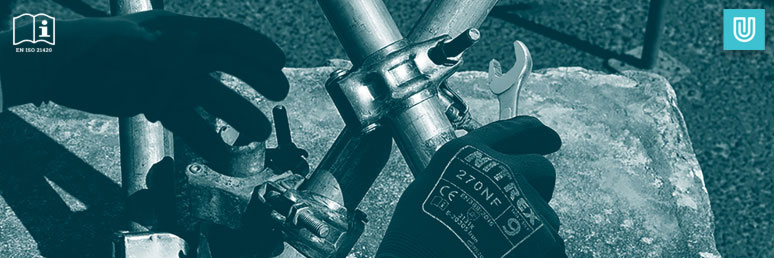A famous advertising slogan once claimed that power is nothing without control. The product, in that case, was tyres, but a similar claim can be applied to safety gloves: protection is nothing without control. Or comfort, for that matter.
In other words, unless work gloves are easy to wear and work with, they won’t be worn – either properly or at all. So, any protection they offer will be worthless. Which is why compliance of protective gloves with EN ISO 21420 – the standard that defines the general requirements and test methods (but not performance) for all protective gloves – can be just as important as compliance with more specific, performance-related glove standards.
EN420 general requirements for protective gloves
The worldwide standard EN ISO 21420:2020 updated the previous EN420:2003 standard. It applies to work gloves, such as Unigloves’ Nitrex 270NF General Handling Gloves – which offer the ultimate combination of protection, performance and comfort – as well as the likes of gardening gloves and household gloves.
In addition to comfort and dexterity, the standard covers such general requirements as design and construction. It doesn’t test the protective properties of gloves, so those claiming to provide, say, chemical or mechanical protection will also be tested and certified to the standards relevant to those properties. (See our blogs on EN374 gloves for chemical protection and EN388 gloves to guard against mechanical risks.)
Glove comfort and dexterity under EN420
Comfort is a key feature of work gloves, which often have to be worn for long periods. Flexibility and a light weight will help ensure wearers’ hands don’t get tired. Dexterity is defined as “the manipulative ability to perform a task with the hands”. It is determined by a test that involves picking up small steel pins. The smaller the diameter of the pin that can be picked up while wearing the glove being tested, the more dexterity it can claim.

Glove design and construction under EN420
According to EN ISO 21420, protective gloves must not hinder the wearer’s performance of a task and must provide adequate protection from risk. They must be designed such that the time needed for putting them on (donning) and taking them off (doffing) is minimised. If the gloves are multi-layered, e.g., they feature a liner, the layers must not become separated during donning and doffing.
The sizes covered by the standard range from size 4 to size 13 and are based on glove length, i.e., the distance from the tip of the middle finger to the wrist. There is no minimum length requirement and manufacturers may use different sizing systems, as long as these are explained in the user documentation.
Harm to health and allergic reactions
Another key requirement under the standard is innocuousness, i.e., that any hazardous substances contained in the glove material do not harm the health of the wearer. For example, chromium VI, a skin sensitiser, can be present in leather gloves, as it can be formed during the tanning process under certain conditions.
To meet the requirements of EN ISO 21420, leather gloves must contain less than 3 mg/kg. Also, the pH value of all materials used in a glove – each of which needs to be tested separately – must be more than 3.5 and less than 9.5.
The Unigloves range has been developed to be extremely comfortable and dextrous, as well as protective against a range of specific hazards. All our range is compliant with EN ISO 21420 (formerly known as EN420) for comfort, design, dexterity and harmlessness to the health of the wearer. You can browse the range here. Alternatively, contact our team to find your nearest distributor.
To learn more about EN standards as they relate to protective gloves, download our Glove EN Standards Guide.


